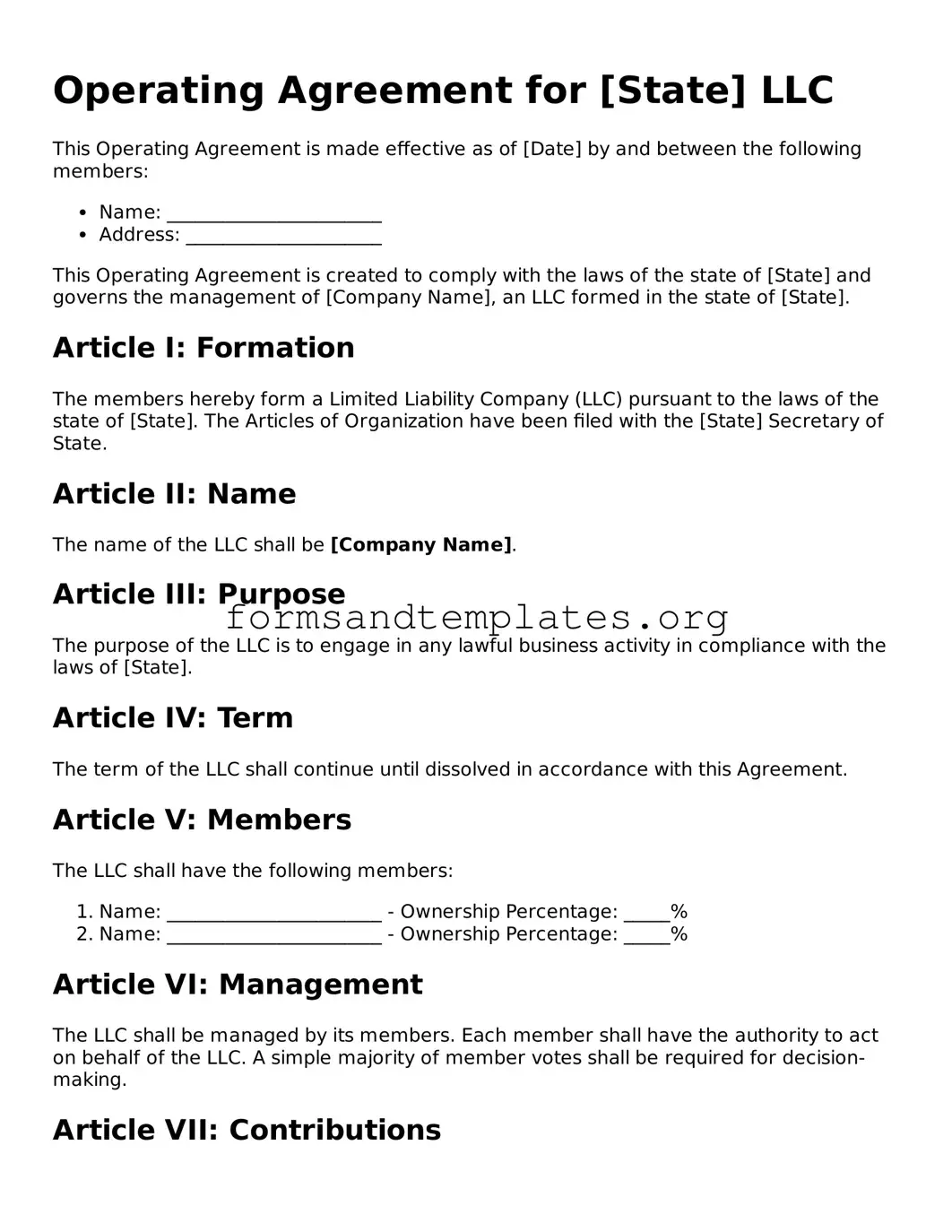Operating Agreement for [State] LLC
This Operating Agreement is made effective as of [Date] by and between the following members:
- Name: _______________________
- Address: _____________________
This Operating Agreement is created to comply with the laws of the state of [State] and governs the management of [Company Name], an LLC formed in the state of [State].
Article I: Formation
The members hereby form a Limited Liability Company (LLC) pursuant to the laws of the state of [State]. The Articles of Organization have been filed with the [State] Secretary of State.
Article II: Name
The name of the LLC shall be [Company Name].
Article III: Purpose
The purpose of the LLC is to engage in any lawful business activity in compliance with the laws of [State].
Article IV: Term
The term of the LLC shall continue until dissolved in accordance with this Agreement.
Article V: Members
The LLC shall have the following members:
- Name: _______________________ - Ownership Percentage: _____%
- Name: _______________________ - Ownership Percentage: _____%
Article VI: Management
The LLC shall be managed by its members. Each member shall have the authority to act on behalf of the LLC. A simple majority of member votes shall be required for decision-making.
Article VII: Contributions
Each member shall make an initial capital contribution as follows:
- Name: _______________________ - Contribution: $__________
- Name: _______________________ - Contribution: $__________
Article VIII: Distributions
Profits and losses shall be allocated to members in accordance with their ownership percentages. Distributions shall be made annually, or as decided by the members.
Article IX: Indemnification
The LLC shall indemnify its members to the fullest extent permitted by law against any losses incurred in the course of performing their duties.
Article X: Amendments
This Agreement may be amended only by a written agreement signed by all members.
Article XI: Governing Law
This Agreement shall be governed by the laws of the state of [State].
IN WITNESS WHEREOF, the undersigned have executed this Operating Agreement as of the day and year first above written.
_______________________________
Member Signature
_______________________________
Member Signature
